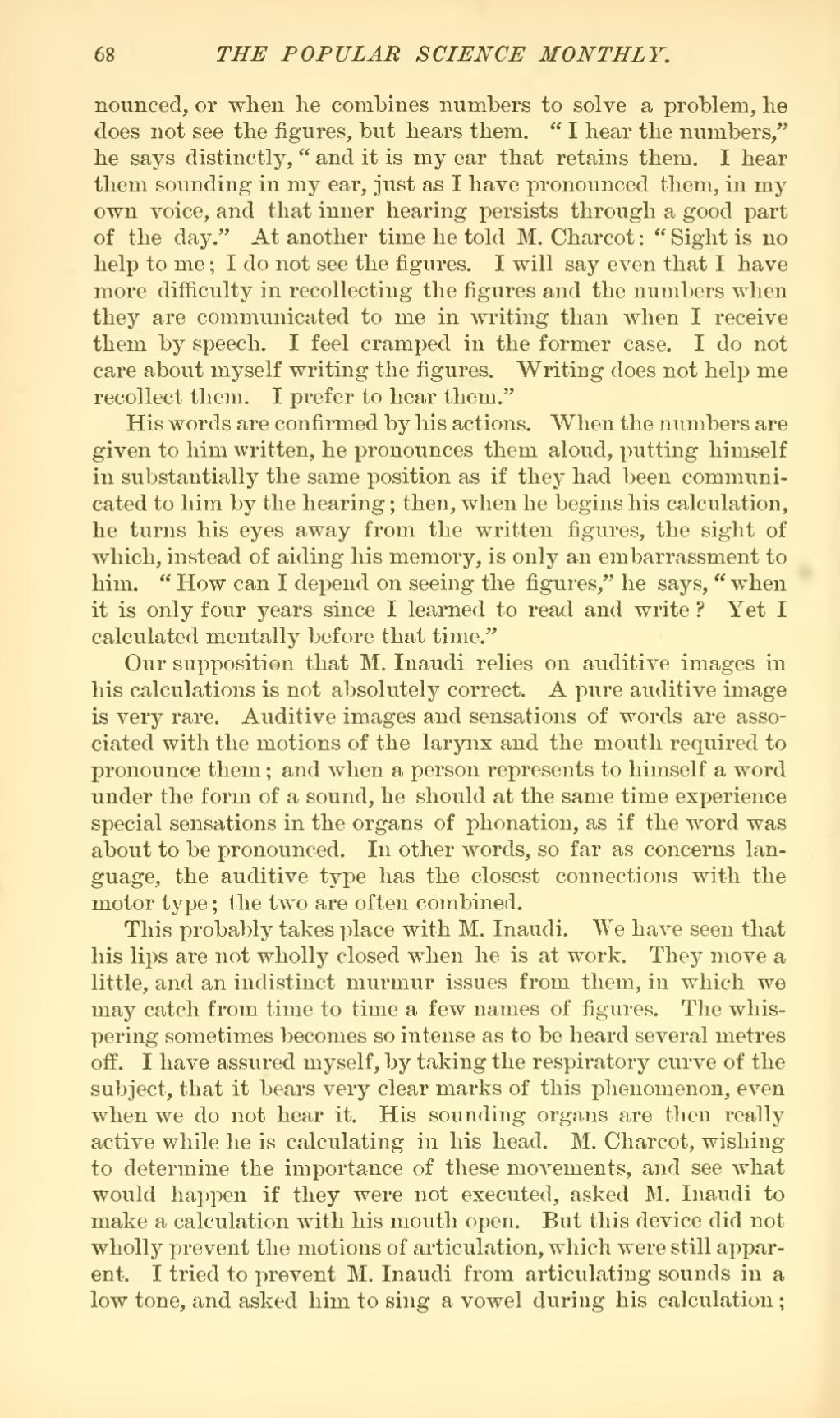nounced, or when he combines numbers to solve a problem, he does not see the figures, but hears them. "I hear the numbers," he says distinctly, "and it is my ear that retains them. I hear them sounding in my ear, just as I have pronounced them, in my own voice, and that inner hearing persists through a good part of the day." At another time he told M. Charcot: "Sight is no help to me; I do not see the figures. I will say even that I have more difficulty in recollecting the figures and the numbers when they are communicated to me in writing than when I receive them by speech. I feel cramped in the former case. I do not care about myself writing the figures. Writing does not help me recollect them. I prefer to hear them."
His words are confirmed by his actions. When the numbers are given to him written, he pronounces them aloud, putting himself in substantially the same position as if they had been communicated to him by the hearing; then, when he begins his calculation, he turns his eyes away from the written figures, the sight of which, instead of aiding his memory, is only an embarrassment to him. "How can I depend on seeing the figures," he says, "when it is only four years since I learned to read and write? Yet I calculated mentally before that time."
Our supposition that M. Inaudi relies on auditive images in his calculations is not absolutely correct. A pure auditive image is very rare. Auditive images and sensations of words are associated with the motions of the larynx and the mouth required to pronounce them; and when a person represents to himself a word under the form of a sound, he should at the same time experience special sensations in the organs of phonation, as if the word was about to be pronounced. In other words, so far as concerns language, the auditive type has the closest connections with the motor type; the two are often combined.
This probably takes place with M. Inaudi. We have seen that his lips are not wholly closed when he is at work. They move a little, and an indistinct murmur issues from them, in which we may catch from time to time a few names of figures. The whispering sometimes becomes so intense as to be heard several metres off. I have assured myself, by taking the respiratory curve of the subject, that it bears very clear marks of this phenomenon, even when we do not hear it. His sounding organs are then really active while he is calculating in his head. M. Charcot, wishing to determine the importance of these movements, and see what would happen if they were not executed, asked M. Inaudi to make a calculation with his mouth open. But this device did not wholly prevent the motions of articulation, which were still apparent. I tried to prevent M. Inaudi from articulating sounds in a low tone, and asked him to sing a vowel during his calculation;

